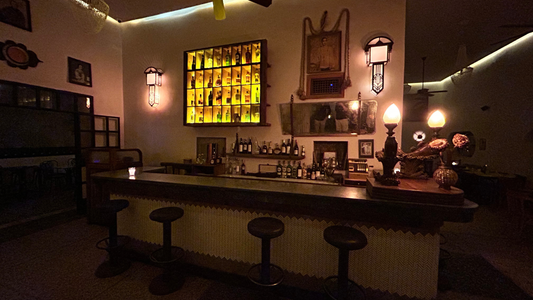Glen Grant 18 — Orchard and Oak
By Rafi Mercer
Glen Grant has always been known for its elegance. Founded in 1840 in Rothes, it carved its reputation on light, floral whiskies that appealed across borders, particularly in Italy, where the brand became a household name. But behind that approachable style lies a deeper story, and few bottles tell it better than the Glen Grant 18. Matured in both ex-bourbon and sherry casks, it retains the distillery’s trademark orchard brightness while adding the depth of age — fruit layered with oak, sweetness balanced by structure.
The distillery’s history is woven with innovation. Brothers John and James Grant built it on Speyside’s fertile ground, using tall, slender stills and unique purifiers that produced a lighter spirit. This precision gave Glen Grant a style unlike its neighbours — crisp, green-apple freshness, a clarity that made it instantly recognisable. Over time, the 18-year-old expression has emerged as its crown jewel, showing how that clarity matures into something more profound.
In the glass, Glen Grant 18 shines golden amber. On the nose, it offers apple, pear, apricot, and a trace of honey, joined by almond and soft spice. On the palate, it is elegant yet firm: orchard fruit at first, then vanilla, toffee, roasted nut, and a gentle oak dryness. The finish is long and balanced, leaving fruit and spice in tandem, clean yet enduring. It is whisky that feels precise, almost architectural, every note placed with care.
What sets Glen Grant 18 apart is its combination of freshness and maturity. Many whiskies gain depth at the cost of lightness; here, the orchard brightness remains intact, even enhanced. It is whisky that proves age does not have to mean heaviness. This is why it belongs in the Tracks & Tales Guide to the Top 50 Whiskies: it shows that patience can deepen without darkening, refine without erasing identity.
Its musical twin is Bill Evans’s Sunday at the Village Vanguard. Recorded live in 1961, the album captures Evans’s trio at their most intimate, balancing delicacy with depth. Like Glen Grant 18, it is precise without losing warmth, subtle yet enduring. Tracks like “Gloria’s Step” and “Alice in Wonderland” unfold with the same balance of lightness and weight, presence and space. To drink Glen Grant 18 alongside this record is to notice how clarity itself can be moving.
In a listening bar, the pairing feels effortless. A dram of Glen Grant 18 sits in the hand as Evans’s piano lines weave with Scott LaFaro’s bass and Paul Motian’s brushes. The whisky’s fruit and oak mirror the trio’s interplay — each element distinct, yet held in perfect proportion. Nothing overwhelms; everything connects. Both whisky and album remind us that subtlety can be as powerful as grandeur.
Glen Grant 18 is not the loudest voice in Speyside, nor the richest, nor the most collected. But it is among the most complete. It offers an experience that rewards attention without demanding it, a dram that feels as appropriate at a quiet table as it does on a special occasion.
And perhaps the next step is to experience it in a setting that honours intimacy — a bar small enough that conversation hums low, the sound system tuned for jazz, the shelves carrying bottles chosen for refinement rather than rarity. Because Glen Grant 18, like Sunday at the Village Vanguard, teaches us that the most resonant experiences often happen in smaller rooms, where every detail counts.
Rafi Mercer writes about the spaces where music matters. For more stories from Tracks & Tales, subscribe, or click here to read more.







